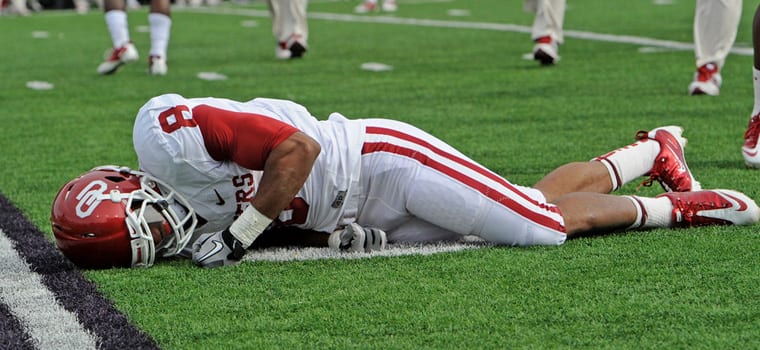Stanley Doughty was a student-athlete at the University of South Carolina with high hopes of playing for the NFL. He received a call from a recruiter for the Kansas City Chiefs and signed a two-year, $400,000 contract. It was a dream come true for him and his family. However, during the mandatory testing of new players, Doughty’s X-rays revealed a cervical spine injury, which ended his NFL career before it began. Sadly, Doughty did not know the severity of his injuries because the doctors at his school had cleared him to continue playing. During his college football career, an impact left him temporarily paralyzed with a tingling sensation in his arms and neck, but the neurosurgeon gave Doughty the “go-ahead” to keep playing.
In the NCAA there are 20,718 football injuries a year, and of those, 841 are spinal injuries. A sudden, traumatic blow to the spine, like a helmet-to-helmet collision, often causes spinal injuries. Research shows that spinal injuries lead to permanent disability due to cervical cord and brain injuries. However, the college teams continue to allow their student-athletes to play with these injuries, disregarding the possible long-term effects. Additionally, knee injuries are very common in collegiate sports. For some players their injuries are worsened when they are given the “OK” to continue playing without proper treatment. When minor injuries are not addressed properly and timely, they will often lead to torn ligaments and permanent damage that can easily be avoided. There are around 4,000 knee injuries per year in collegiate sports, which can cost around $11,000 to repair and leaves the athlete vulnerable to further injuries.
Although the NCAA requires student-athletes to have health insurance before entering the campus, as of right now the schools are not required to pay for players’ health insurance. Many universities do not have a contractual obligation with players to treat injuries or strains as a result of their collegiate sports. Furthermore, athletic departments are not required to publish their healthcare policies in writing, with the exception of California. Often, private health insurance might not be enough to cover the potential disability these collegiate athletes face.
The NCAA provides an “exceptional student-athlete disability program” that deceivingly provides certain athletes with health coverage. The program provides that qualifying student-athletes can purchase disability insurance contracts with preapproved financing to protect future loss of earnings as a professional due to a disabling injury or illness that may occur during their college careers. However, this means that the student will need to borrow money through the NCAA program, which they will then need to repay when their collegiate career is completed.
This usually runs around $50,000. The NCAA also has catastrophic insurance that is used when the student-athletes medical bills exceed $90,000. Anything less, the bills must be paid by the athlete’s family. Although athletes generate billions of dollars for the NCAA and the universities, there are no benefits provided to them without cost.
Many collegiate athletes trust their coaches and their schools to have their best interest at heart. When the student-athlete is no longer able to play and suffers from career-ending injuries, they often fall off the grid and may not receive proper care provided by their schools. The NCAA and the universities need to create provisions that better protect the student-athletes who dedicate their time and health to generate millions of dollars for their schools.









